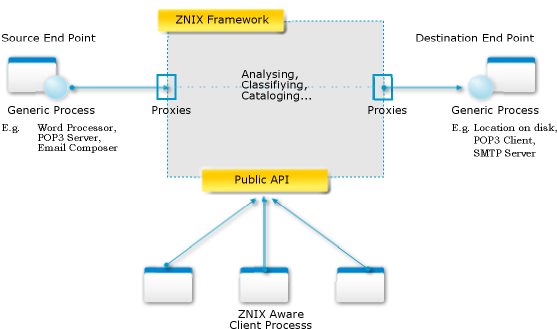• Benefits over alternatives
As previously mentioned information management systems have evolved to be very efficient in managing (in terms of categorizing and searching) information. However, none have actually been successful in connecting these disparate dots of information and completing the bigger picture. For this reason, these traditional information management systems are not regarded as alternatives to ZNIX. How ZNIX measures against possible exceptions to this is expressed below:
• Project Haystack
"Haystack is a tool designed to let every individual manage all of their information in the way that makes the most sense to them"[WWW01].
Sharing the idea of a centralized data store with ZNIX, Project Haystack provides a tool (an extendable browser) for accessing the managed information. This tool is however, a standalone application with little support for 3rd party applications. Although, it does provide means for developers build extensions, unless the project is adopted as a global standard there would be little incentive for the development of (especially commercial) extensions.
ZNIX includes both an API and a proxy mechanism. The API would enable developers to build applications that utilize the full potential of the Framework. The proxy mechanism would enable many established 3 rd party applications to interact with the Framework with no modification to them at all.
Additionally, requirements to run Haystack on an Intel PC include 512 megabytes of RAM (with 768 megabytes being strongly recommended). ZNIX Framework on the other hand, would run comfortably on systems with only 256 megabytes of RAM.
• Windows Longhorn
Project ZNIX was largely inspired by an ancestor of Microsoft's Windows Longhorn. However, since at the time of this specification, features inherent in this operating system have not been finalized, little conscious effort will be taken to compare ZNIX framework to Longhorn.
However note that "by the time Longhorn ships, according to Microsoft chairman Bill Gates, PCs will have 4GHz to 6GHz processors, more than 2GB of memory, at least a terabyte of storage, and graphics accelerators three times more powerful than those offered by ATI and NVIDIA today" [WWW02]. Longhorn is designed to cater for such systems. ZNIX on the other hand is designed from the ground up to run on relatively inexpensive systems with far less resources.

